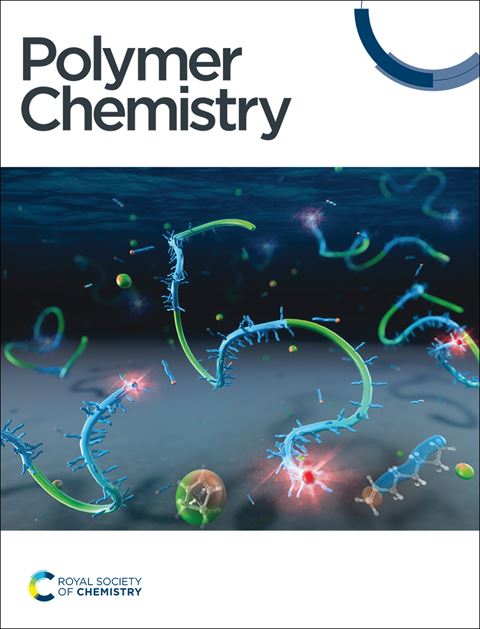Biobased Oleyl Glycidyl Ether: Copolymerization with Ethylene Oxide, Postmodification, Thermal Properties, and Micellization Behavior
IF 4.1
2区 化学
Q2 POLYMER SCIENCE
引用次数: 0
Abstract
Oleyl glycidyl ether (OlGE) is a highly hydrophobic monomer synthesized from a biobased fatty alcohol and epichlorohydrin. When combined with hydrophilic monomethoxy poly(ethylene glycol) (mPEG) macroinitiators, well-defined, highly amphiphilic AB block copolymers are obtained via anionic ring-opening polymerization (Đ ≤ 1.08). Surprisingly, an investigation of the copolymerization kinetics of OlGE and ethylene oxide revealed an almost ideally random copolymerization (rEO = 1.27, rOlGE = 0.78) despite the significant structural differences. Both statistical and block copolymers were investigated regarding their behavior in aqueous solution. The block copolymers of the type mPEG-b-POlGE featured two distinct melting temperatures (Tms). Besides a melting transition of mPEG, a second Tm is attributed to the crystallization of the cis-alkenyl side chain of the OlGE units. Varying degrees of side chain hydrogenation of the POlGE homopolymer using potassium azodicarboxylate (PADA) allowed for tailoring of the Tm. The thiol-ene click reaction allowed subsequent functionalization. This work not merely highlights the prospect of novel polyether surfactants, it also suggests the potential of biobased long-chain polyethers for the development of drug delivery systems featuring temperature-controlled release.求助全文
约1分钟内获得全文
求助全文
来源期刊

Polymer Chemistry
POLYMER SCIENCE-
CiteScore
8.60
自引率
8.70%
发文量
535
审稿时长
1.7 months
期刊介绍:
Polymer Chemistry welcomes submissions in all areas of polymer science that have a strong focus on macromolecular chemistry. Manuscripts may cover a broad range of fields, yet no direct application focus is required.
 求助内容:
求助内容: 应助结果提醒方式:
应助结果提醒方式:


